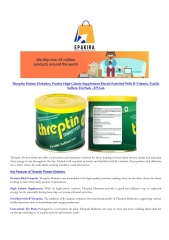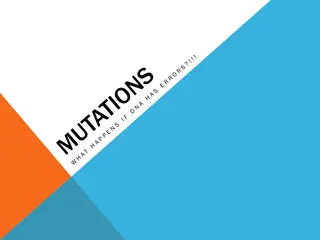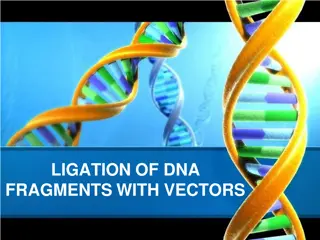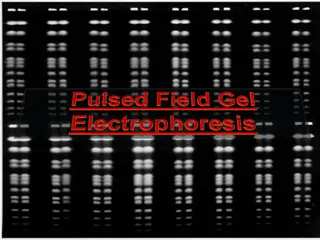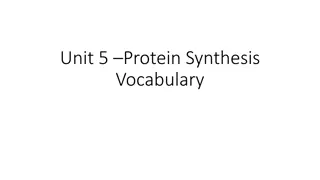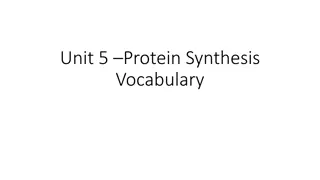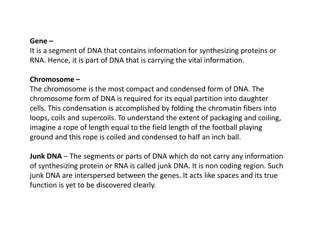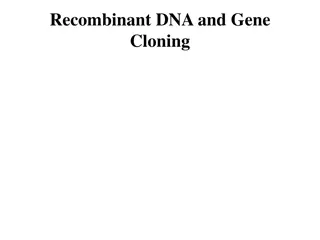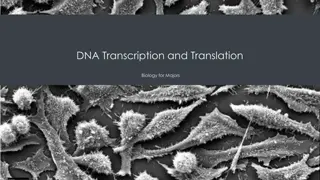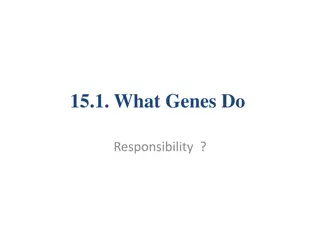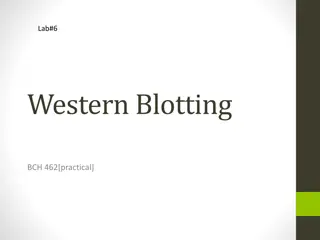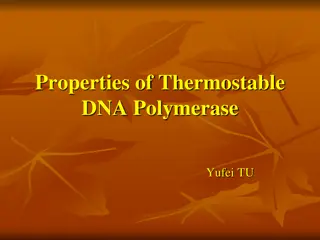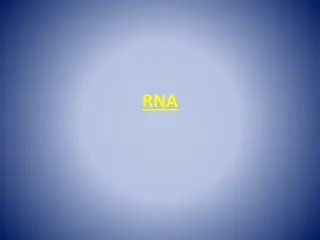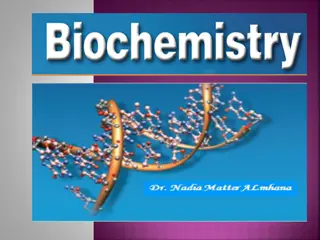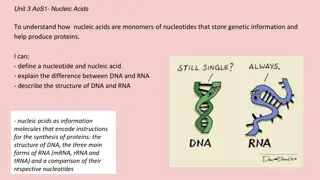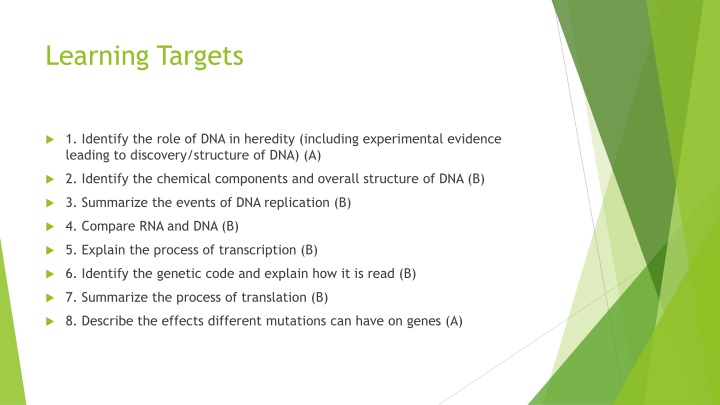
DNA and Heredity: Key Concepts and Discoveries
Explore the fundamental role of DNA in heredity and the chemical components of DNA, alongside the processes of replication, transcription, and translation. Learn about genetic mutations and the structure of DNA through significant historical events and key scientists' contributions.
Download Presentation

Please find below an Image/Link to download the presentation.
The content on the website is provided AS IS for your information and personal use only. It may not be sold, licensed, or shared on other websites without obtaining consent from the author. If you encounter any issues during the download, it is possible that the publisher has removed the file from their server.
You are allowed to download the files provided on this website for personal or commercial use, subject to the condition that they are used lawfully. All files are the property of their respective owners.
The content on the website is provided AS IS for your information and personal use only. It may not be sold, licensed, or shared on other websites without obtaining consent from the author.
E N D
Presentation Transcript
Learning Targets 1. Identify the role of DNA in heredity (including experimental evidence leading to discovery/structure of DNA) (A) 2. Identify the chemical components and overall structure of DNA (B) 3. Summarize the events of DNA replication (B) 4. Compare RNA and DNA (B) 5. Explain the process of transcription (B) 6. Identify the genetic code and explain how it is read (B) 7. Summarize the process of translation (B) 8. Describe the effects different mutations can have on genes (A)
Thursday _ _ 2/14/19 Agenda: DNA Notes #1 Storyline Ticker Questions No test today Test Tomorrow! Warm Up: Give a high five to another student. Learning Target(s) What you should be able to do by the end of today: 1. Identify the role of DNA in heredity (including experimental evidence leading to discovery/structure of DNA) 2. Identify the chemical components and overall structure of DNA
DNA Storyline List James Watson Polymer Double Helix Model X-Ray Photographs Rosalind Franklin Maurice Wilkins Mutation DNA Polymerase 1962 Nobel Prize in Medicine Nucleotides Deoxyribose sugar Adenine Nitrogen-containing bases Complimentary base pairs Guanine Phosphate molecules Genetic information Chromosome Replication Copying Chargaff s Rule DNA Thymine Francis Crick 1953 Hydrogen Bond Covalent Bond Single and Double Strand Cytosine
DNA, RNA & Protein Synthesis Chapters 12 & 13
A little History Year 1928 Scientist(s) Frederick Griffith Discovery Bacteria transfer genetic material from cell to cell. Griffith had discovered DNA! 1944 Oswald Avery, Colin Macleod & Maclyn McCarty Erwin Chargaff 1950 Of the four possible nucloetides: As = Ts & Gs = Cs. Genetic material in viruses is also DNA. 1952 Alfred Hershey & Martha Chase Rosalind Franklin James Watson & Francis Crick Craig Venter & Francis Collins 1952 1953 Demonstrated that DNA is a helix. DNA is a double helix. 2000 Sequenced human DNA.
DNA DNA stands for Deoxyribose Nucleic Acid. In eukaryotes, DNA is on the chromosomes in the nucleus. In prokaryotes (no nucleus), DNA is circular.
Structure of DNA Double-stranded helix Provides instructions for making proteins/codes for specific traits. Made of nucleotides.
Nucleotide Parts 1) Sugar - deoxyribose 2) Phosphate group (has element phosphorous) 3) Nitrogenous base Sugar and phosphate make the sides. Bases make the rungs.
Nucleotide Types 1) Adenine (A) 2) Thymine (T) 3) Cytosine ( C ) 4) Guanine (G) A bonds with T G bonds with C Chargaff s Rules Complementary Strands: one strand of DNA is built from bases of another strand.
We love DNA made of nucleotides, sugar phosphate and a base, bonded down one side. Adenine and thymine make a lovely pair Cytosine without guanine would feel very bare
Friday _ _ 2/15/19 Agenda: Test TED Talk-Watson DNA Notes #2 Warm Up: Study Guides!! Genetics Test Can use notes (only 75% possible) Cannot correct if you did not do the review Review is turned in for 10 pts Learning Target(s) What you should be able to do by the end of today: 1. Identify the role of DNA in heredity (including experimental evidence leading to discovery/structure of DNA) 2. Identify the chemical components and overall structure of DNA
DNA Replication Why does DNA need to replicate? To make a new strand of DNA. When does it happen? Before cell division (mitosis or meiosis) Where does it happen? In the nucleus
DNA Replication: Step 1 Enzyme (Helicase) unwinds DNA
DNA Replication: Step 2 Enzyme (DNA Polymerase) attaches free nucleotides to the original strands to form a new double helix strand.
DNA Replication: Step 3 Replication occurs in many spots along the DNA molecule until all parts are copied. Two identical strands are made. Now cell division can occur! Zipper demo Replication Video
Humans have 3 billion pairs of nucleotides. DNA replication speeds up when you add heat and/or more enzymes. And enzymes are ?
Tuesday _ _ 2/19/19 Agenda: Notes #3: DNA and RNA DNA Extraction LAB Primary Article GRADES: Check them, some of you are missing labs. I have no names as well. Warm Up: New Warm Up Sheet Where can we find your genes? Learning Target(s) What you should be able to do by the end of today: 1. Identify the role of DNA in heredity (including experimental evidence leading to discovery/structure of DNA) 2. Identify the chemical components and overall structure of DNA
DNA Extraction Lab (DUE tomorrow) Fill testube 1/3 full of banana mush. (3 pipettes!!!) Add 3 pipettes of soap buffer to banana mush. (250 mL water, 1.5 g salt, 10% soap) 1. 2. Stir soap and banana mix for 5 minutes. Add 3 pipettes of cold alcohol to the test tube at 45 degrees and observe for 5 minutes. Precipitate=DNA. 3. 4. 5. Clean beaker and test tube and return to original area. 6.
DNA LAB CLEAN UP Rinse testubes, put back in rack Rinse beaker Rinse pipettes and skewers (wooden sticks) and put back in beaker Get bottom of paper signed by me to be excused back to your seat.
Genes Section of DNA with the instructions to make 1 protein. Found in the nucleus of the cell.
Proteins Click here for animation -> XX Many amino acids linked together. Proteins are made in the cytoplasm by ribosomes but the instructions for doing this (the DNA) can t leave the nucleus.
How can this work??? RNA A single-stranded copy of DNA.
DNA vs. RNA RNA DNA Chain of nucleotides. Sugar is ribose. (O2 added) Single-stranded. Bases are A,U,G,C. (U = uracil, molecule lost). Chain of nucleotides. Sugar is deoxyribose. Double-stranded. Bases are A,T,G,C.
To go from DNA to a Protein, there are two steps: Transcription- The process of copying a sequence of DNA to produce a complementary strand of RNA. 1) Translation- protein is made from mRNA using a ribosome. 2)
Types of RNA Transfer RNA (tRNA) Messenger RNA (mRNA) Copies DNA in the nucleus and moves it to a ribosome. Brings amino acid to the ribosome for protein assembly. Ribosomal RNA (rRNA) Inside the ribosome. Helps with translation to create a protein.
Transcription: mRNA copies DNA Step 1: enzyme (RNA Polymerase) unwinds DNA in the nucleus. Step 2: mRNA bases make a copy of DNA.
Transcription (Part 2) Step 4: cap and tail are added. Step 5: mRNA leaves the nucleus for the cytoplasm. Link
Wednesday _ _ 2/20/19 Agenda: SUB Drawing 3rd period: replication book notes DNA online: Build a Model Letter from Crick/Response Warm Up: What needed to happen to the cell membrane in banana cells in order to extract DNA? (first period do not answer yet) The structure of DNA: speaking about the bases it is made of what did Chargaff say? Think about the movie. Learning Target(s) What you should be able to do by the end of today: 1. Identify the role of DNA in heredity (including experimental evidence leading to discovery/structure of DNA) 2. Identify the chemical components and overall structure of DNA
Cricks Letter to his Son My Dear Michael, 19 Portugal Place Cambridge 19 March 53 Jim Watson and I have probably made a most important discovery. We have built a model for the structure of de-oxi-ribose-nucleic-acid (read it carefully) called D.N.A. for short. You may remember that the genes of the chromosomes which carry the hereditary factors are made up of protein and D.N.A. Our structure is very beautiful. D.N.A. can be thought of roughly as a very long chain with flat bits sticking out. The flat bits are called the bases . The formula is rather like this. | sugar base | phosphorus | sugar base | phosphorus and so on
Now we have two of these chains winding round each other each one is a helix and the chain, made up sugar and phosphorus, is on the outside, and the bases are all on the inside. I can t draw it very well, but it looks like this. [diagram of the double helix] The model looks much nicer than this. Now the exciting thing is that while there are 4 different bases, we find we can only put certain pairs of them together. The bases have names. They are Adenine, Guanine, Thymine & Cytosine. I will call them A, G, T and C. Now we find that the pairs we can make which have one base from one chain joined to one base from another are only A with T and G with C. Now on one chain, as far as we can see, one can have the bases in any order, but if their order is fixed, then the order on the other chain is also fixed. For example, suppose the first chain goes then the second must go
A - - - - - - - - - - - - - - - - - T T - - - - - - - - - - - - - - - - - A C - - - - - - - - - - - - - - - - -G A - - - - - - - - - - - - - - - - - T G - - - - - - - - - - - - - - - - -C T - - - - - - - - - - - - - - - - - A T - - - - - - - - - - - - - - - - - A It is like a code. If you are given one set of letters you can write down the orders. Now we believe that the D.N.A. is a code. That is, the order of the bases (the letters) makes one gene different from another gene (just as one page of print is different from another). You can now see how Nature makes copies of the genes. Because if the two chains unwind into two separate chains, and if each chain then makes another chain come together on it, then because A always goes with T, and G with C, we shall get two copies where we had one before. For example
A T T A C G A T G C T A T A chains separate A T T A C G A T G C T A T A new chains form A T T A T A A T C G G C A T T A G C C G T A A T T A A T
In others words we think we have found the basic copying mechanism by which life comes from life. The beauty of our model is that the shape of it is such that only these pairs can go together, though they could pair up in other ways if they were floating about freely. You can understand that we are very excited. We have to have a letter off to Nature in a day or so. Read this carefully so that you understand it. When you come home we will show you the model. Lots of love, Daddy
Reading Cricks Letter to His Son Imagine you are a high school student in 1953. You had never heard of DNA, but you had heard of hereditary and genetic material. If news came to your science classroom that the genetic material inside of the cells that you were studying had been identified and that there had been a proposed configuration for the structure, how would that affect your studies? Would you have been excited? What are some other discoveries that could not have been done without understanding the structure of DNA? Write a two-paragraph response.
Friday _ _ 2/22/19 Agenda: Notes #4 Video? Cell Model laminate parts DNA Dry Lab Practice quiz Monday Warm Up: Draw a quick model of DNA. Learning Target(s) What you should be able to do by the end of today: 1. Identify the role of DNA in heredity (including experimental evidence leading to discovery/structure of DNA) 2. Identify the chemical components and overall structure of DNA
Ribosomes & Protein Synthesis
Codons Instructions or a section of three mRNA bases in a row that code for one amino acid. Each codon corresponds to an Amino Acid.
Anticodons The corresponding tRNA molecule that carries the amino acid to the ribosomes. Something something something protein
Translation: mRNA binds with a ribosome and amino acids to create a protein. Animation<- -> XX 1.) Ribosome finds the start codon, AUG, on mRNA. 2.) The corresponding anti-codon on the tRNA connects and binds to mRNA. 3.) The ribosome reads the next codon & its corresponding anticodon binds. 4.) The ribosome bonds the two amino acids on the tRNA together. The tRNA lets go. 5.) This continues until a stop codon, UAA, is reached. Then the last tRNA & ribosome fall off. 6.) The amino acid chain folds into its proper structure/protein.
The central dogma of molecular biology= DNA--> RNA--> Protein (called protein synthesis) PRACTICE DNA: TTA CGC AGC mRNA: AAU GCG UCG tRNA: UUA CGC Amino Amino Amino Acid Acid Acid AGC
Monday _ _ 2/25/19 Agenda: SUB 3rd period: forecasting DNA Practice Quiz Protein Synthesis Online Lab (HW for 3rd) Warm Up: NEW warm up sheet turn in the old one. What proteins are involved with DNA Replication? Learning Target(s) What you should be able to do by the end of today: 1. Compare RNA and DNA (B) 2. Explain the process of transcription (B) 3. Identify the genetic code and explain how it is read (B) 4. Summarize the process of translation (B)
Tuesday _ _ 2/26/19 Agenda: Complete online lab Protein Synthesis Sentences Begin: Secret of Photo 51 (50 mins) Warm Up: Please create an mRNA molecule from the following DNA molecule. Here; only exchange for Uracil. ATATCCGACGAC Learning Target(s) What you should be able to do by the end of today: 1. Compare RNA and DNA (B) 2. Explain the process of transcription (B) 3. Identify the genetic code and explain how it is read (B) 4. Summarize the process of translation (B)
Protein Synthesis Sentences Visit the nucleus to get your DNA strand. Create RNA strand and leave the nucleus. Go the ribosome and translate your RNA strand into the corresponding amino acids and the final protein.
Wednesday _ _ 2/27/19 Agenda: Notes #5: Mutations Rice Krispy Lab Complete Photo 51 Warm Up: DNA to RNA to ? Forecasting Learning Target(s) What you should be able to do by the end of today: 1. Compare RNA and DNA (B) 2. Explain the process of transcription (B) 3. Identify the genetic code and explain how it is read (B) 4. Summarize the process of translation (B)

